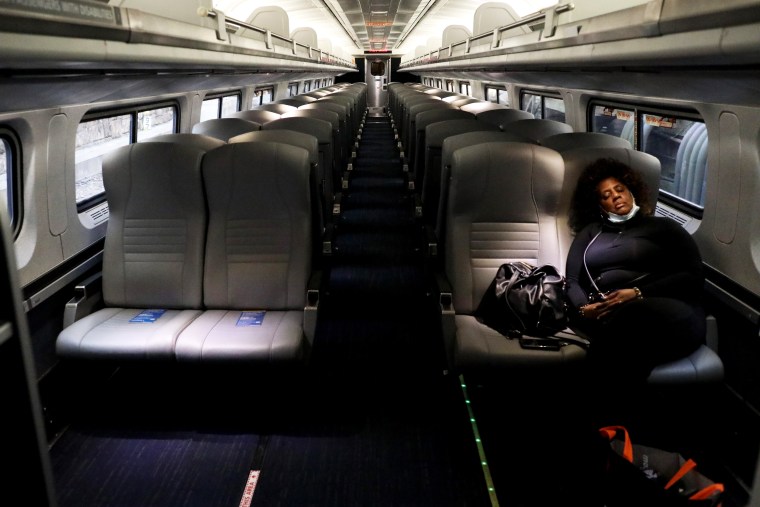Amtrak’s payday is on its way.
The $22 billion allocated to Amtrak as part of the $1 trillion bipartisan infrastructure bill President Joe Biden signed into law this week is the largest investment of its kind the passenger railroad company has received since it began operations five decades ago.
Amtrak’s budget is funded by revenue from tickets, alongside dollars from federal and state allocations.
This chart shows the $22 billion in Amtrak's infrastructure money, which will be distributed over the coming five years, and how it compares to the federal funding in Amtrak’s past. The $4.4 billion projected to be distributed in 2022 would be nearly 4 times the average yearly funding Amtrak has received.
The company’s Northeast Corridor, home to its busiest and most profitable routes, stands to benefit from improvements outlined in the act. Amtrak’s leadership says the money will also be spent on possible service expansion, but some experts are skeptical that sustainable improvements will be possible given the high cost of building and maintaining rail transit.
“The price tag has become so high on some of these projects,” said Hani Mahmassani, director of the Northwestern University Transportation Center. “There are so many high-ticket items in there, in terms of bridges and tunnels and so on that you’re just not getting the bang for the buck.”
CORRECTION: (Nov. 17, 2021, 3:46 p.m. ET): A previous version of this article and graphic misstated how much Amtrak will get in federal funding from the infrastructure bill. The company will get $22 billion, not $66 billion.
